What Are Goals Of Science? Choose All That Apply.
Imogene King was a nursing pioneer and renowned for her development of the nursing theory: "Theory of Goal Attainment." Get to know Imogene King's biography, major concepts of her theory, and its application and impact in nursing.
Biography of Imogene King
Imogene Martina King (January 30, 1923 – December 24, 2007) was one of the pioneers and most sought nursing theorists for her Theory of Goal Attainment, which she developed in the early 1960s. Her work is being taught to thousands of nursing students worldwide and is implemented in various service settings.
As a recognized global leader, King truly made a positive difference for the nursing profession with her significant impact on nursing's scientific base. She made an enduring impact on nursing education, practice, and research while serving as a consummate, active leader in professional nursing.
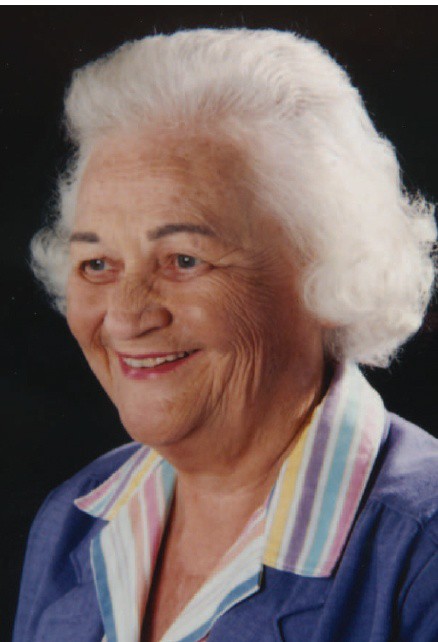
Early Life
Imogene King was born on Jan. 30, 1923, in West Point, Iowa. During her early high school years, she decided to pursue a career in teaching. However, her uncle, the town surgeon, offered to pay her tuition to nursing school. She eventually accepted the offer, seeing nursing school as a way to escape life in a small town. Thus began her remarkable career in nursing.
Education
Imogene King excelled in her nursing studies even though it was not her first choice to consider. In 1945, she received a nursing diploma from St. John's Hospital School of Nursing in St. Louis, Missouri.
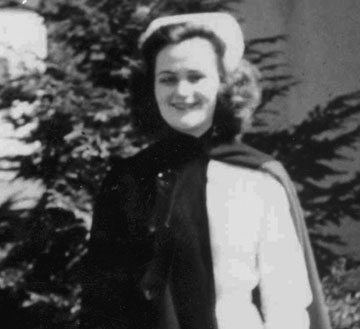
While working in various staff nurse roles, King started coursework toward a Bachelor of Science in Nursing Education, which she received from St. Louis University in 1948. In 1957, she received a Master of Science in Nursing from St. Louis University.
She went on to study with Mildred Montag as her dissertation chair at Teacher's College, Columbia University, New York and received her EdD in 1961.
Career and Appointments
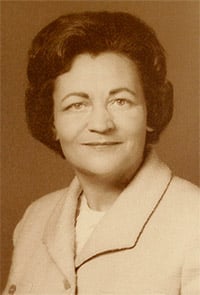
After receiving her diploma in 1945, Imogene King worked in a variety of staff nurse roles. From 1947 to 1958, she worked as an instructor in Medical-Surgical nursing and was an assistant director at St. John's Hospital School of Nursing. King developed a master's degree program in nursing based on a nursing conceptual framework from 1961 to 1966 at Loyola University in Chicago. Her first theory article appeared in 1964 in the journal Nursing Science, which nurse theorist Martha Rogers edited.
Under Jessie Scott, King served as an Assistant Chief of Research Grants Branch, Division of Nursing at the U.S. Department of Health, Education, and Welfare between 1966 and 1968. While King was in Washington, DC, her article "A Conceptual Frame of Reference for Nursing" was published in Nursing Research (1968).
In 1969, King conducted a World Health Organization nursing research seminar in Manila, Philippines, where she met Midori Sugimori of Japan. From then on, the two nurses kept in touch. Sugimori translated King's two theory books into Japanese, and the books strongly influenced nursing education in Japan. The doctoral dissertation of Tomomi Kameoka tested the theory of goal attainment in Japan. King was present when Kameoka presented her research at the honor society's 2001 Biennial Convention.
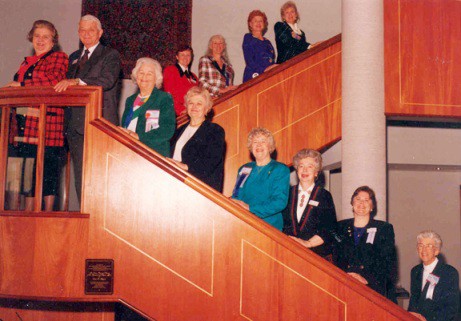
From 1968 to 1972, King served as the School of Nursing director at Ohio State University in Columbus. King then returned to Chicago in 1972 as a professor in the Loyola University graduate program. She also served from 1978 to 1980 as Coordinator of Research in Clinical Nursing at the Loyola Medical Center Department of Nursing. From 1972 to 1975, King was a member of the Defense Advisory Committee on Women in the Services for the U.S. Department of Defense. She also was elected alderman for a 4-year term (1975 to 1979) in Ward 2 at Wood Dale, Illinois.
In 1980, King was appointed professor at the University of South Florida College of Nursing in Tampa. King continued to provide community service and help plan care through her conceptual system and theory at various health care organizations, including Tampa General Hospital.
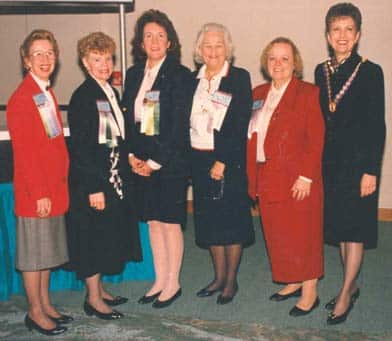
King retired in 1990 and was named professor emeritus at the University of South Florida. She never really retired, as she was always there for students, faculty, and colleagues who were using her theory and even went "round the clock" to implement her theory at Tampa General Hospital. King also served on the nursing advisory board and guest lectured at the University of Tampa.
King was the keynote speaker at two STTI theory conferences in 1992 and presented her theory at multiple regional, national, and international STTI conferences. King communicated regularly with students who were learning about theories within her conceptual system.
King was a long-time member of the American Nurses Association (ANA), first with the Missouri Nurses Association, and she was also active in Illinois and Ohio. Upon her move to Tampa, Florida, she became a Florida Nurses' Association (FNA) member and FNA District 4, Tampa. King held offices such as the Florida Nurses Foundation president, served on the FNA and the FNA District IV boards, and was a delegate from the FNA to the ANA House of Delegates.
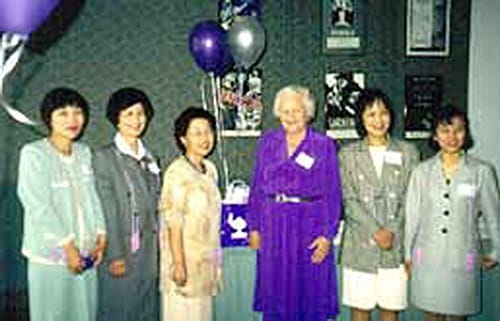
In 2000, King was keynote speaker for the 37th Annual Isabel Maitland Stewart Conference in Research in Nursing at Teachers College, Columbia University, and was pleased that Mildred Montag was present.
The King International Nursing Group (K.I.N.G.) was created to facilitate the dissemination and utilization of King's conceptual system, the Theory of Goal Attainment, and related theories. King consulted with members of the organization on an individual basis regarding her theory and continues to be active.
Theory of Goal Attainment
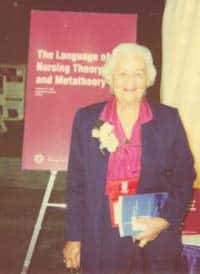
The Theory of Goal Attainment states that "Nursing is a process of action, reaction, and interaction whereby nurse and client share information about their perception in the nursing situation."
Imogene King's Theory of Goal Attainment was first introduced in the 1960s. From the title itself, the model focuses on the attainment of certain life goals. It explains that the nurse and patient go hand-in-hand in communicating information, set goals together, and then take actions to achieve those goals. The factors that affect the attainment of goals are roles, stress, space, and time. On the other hand, the nurse's goal is to help patients maintain health so they can function in their individual roles. The nurse's function is to interpret information in the nursing process, plan, implement, and evaluate nursing care.
To help nurses understand her work, she defined several terms which include the patient, defined as a social being who has three fundamental needs: the need for health information, the need for care that seeks to prevent illness, and the need for care when the patient is unable to help him or herself.
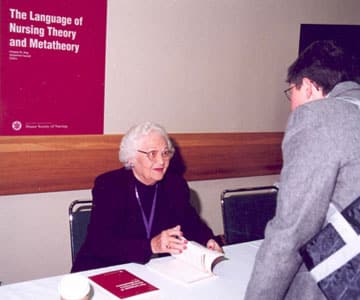
She also explained health as involving the patient's life experiences, including adjusting to stressors in the internal and external environment by using resources available. The environment, defined as the background for human interaction. It involves the internal environment, which transforms energy to enable people to adjust to external environmental changes, and it involves the external environment, which is formal and informal organizations. A nurse is considered part of the patient's environment.
There are three interacting systems in the Theory of Goal Attainment, according to King. These are the personal system , the interpersonal system , and the social system . Each system is given different concepts. The personal system concepts are perception, self, growth and development, body image, space, and time. The concepts for the interpersonal system are interaction, communication, transaction, role, and stress. The social system concepts are organization, authority, power, status, and decision-making.
The theory of Goal Attainment is discussed further below.
Works
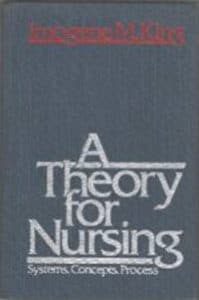
Imogene King earned recognition as a nurse theorist through the publication of Toward a Theory for Nursing: General Concepts of Human Behavior in 1971 and A Theory for Nursing: Systems, Concepts, Process in 1981, and numerous articles related to her conceptual system and theory of goal attainment.
While at Ohio State, where she served as the School of Nursing director, her book Toward a Theory for Nursing: General Concepts of Human Behavior (1971) was published. In this early work, King concluded, "a systematic representation of nursing is required ultimately for developing a science to accompany a century or more of art in the everyday world of nursing." Her book received the American Journal of Nursing Book of the Year Award in 1973.
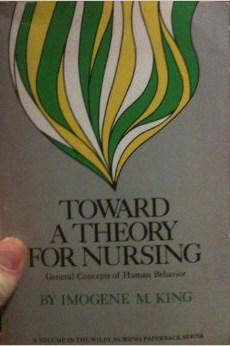
In 1981, the manuscript for her second book, A Theory for Nursing: Systems, Concepts, Process, was published. In addition to her first two books, she authored multiple book chapters and articles in professional journals. A third book, Curriculum and Instruction in Nursing: Concepts and Process, was published in 1986.
Some of her works include Theory for Nursing: Systems, Concepts, Process; Theory for Nursing: Systems, Concepts and Process; The Language of Nursing Theory and Metatheory; Toward a Theory for Nursing: General Concepts of Human Behaviour; and Curriculum and Instruction in Nursing: Concepts and Process.
King also authored several book chapters, for example, Frey & Sieloff's Advancing King's Systems Framework and Theory of Nursing (1995), and Sieloff and Frey's Middle Range Theories for Nursing Practice Using King's Conceptual System (2007), which highlighted her studies by other authors.
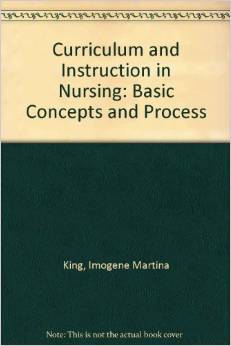
Awards and Honors
Toward a Theory for Nursing: General Concepts of Human Behavior, Imogene King's book received the American Journal of Nursing Book of the Year Award in 1973. In 1980, she was awarded an honorary Ph.D. from Southern Illinois University. King was one of the original Sigma Theta Tau International (STTI) Virginia Henderson Fellows, and she received the STTI Elizabeth Russell Belford Founders Award for Excellence in Education in 1989.
In 1994, King was inducted into the American Academy of Nursing (AAN) and served on the AAN Theory Expert Panel. She received the Jessie M. Scott Award in 1996. King was thrilled that Jessie Scott was there. King was in the ANA House of Delegates to hear President Clinton's congratulations on the ANA's 100th anniversary and his mother's admiration as a nurse anesthetist.
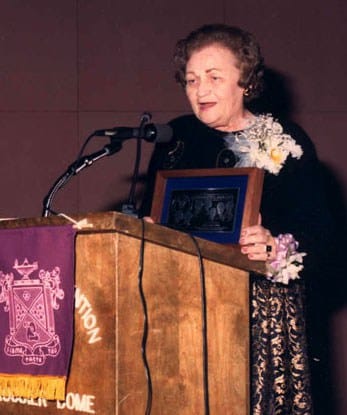
In 1997, King received a gold medallion from Governor Chiles for advancing the nursing profession in the State of Florida. In May 1998, she received an honorary doctorate from Loyola University, where her "Nursing Collection" is housed. In 1999, King was inducted into the Teachers College, Columbia University of Hall of Fame.
In 2004, she was inducted into the FNA Hall of Fame and the ANA Hall of Fame. She was inducted as a Living Legend in 2005.
Despite King's many awards and honors, she considered teaching students to be her most important accomplishment. Over the years, she enjoyed watching her nursing students become expert practitioners, teachers, and researchers.
Death
Imogene King died on December 24, 2007, two days after suffering from a stroke. Patricia Quigley, Ph.D., ARNP, CRRN, FAAN, announced King's passing to nursing colleagues with these words: "May we all burn a candle today for the light that Imogene shined on us with her smile, laughter, knowledge, and passion for each day. We all shared in our love for her. Combining religion and science through nursing, her inspired voice was never weak—but strong with passion and conviction."
Midori Sugimori, Naomi Funashima, Kyoko Yokoyama, and Tomomi Kameoka, four of the Japanese nurses whom King had mentored, traveled to Florida to pay their respects upon hearing of King's death.
King's memorial services were held on January 4 in St. Pete Beach, Florida, and January 19 in Fort Madison, Iowa, where she was buried. Her last moments were attended by her friends, relatives, and colleagues.
During both services, Patricia Messmer read the Nightingale Tribute, which included a synopsis of King's career and a poem, "Imogene Was There." Seven green Irish roses symbolized the seven decades of her nursing career. A Nightingale Lamp from the University of Pittsburgh, her graduation picture from St. John's Hospital School of Nursing, and a current photo were also displayed for the memorial services.
Theory of Goal Attainment of Imogene King
Some people consider their "success" after being hired in a great and well-known institution. But when someone decides to pursue a career in nursing, one should set his or her mind that they should be an instrument in helping patients get healthy. And to achieve that, it's important to set health goals with the patient, then take steps to achieve those goals.
Imogene M. King's Theory of Goal Attainment focuses on this process to guide and direct nurses in the nurse-patient relationship, going hand-in-hand with their patients to meet good health goals.
King's Theory of Goal Attainment was first introduced in the 1960s. From the title itself, the model focuses on the attainment of certain life goals. It explains that the nurse and patient go hand-in-hand in communicating information, set goals together, and then take actions to achieve those goals.
King has interrelated the concepts of interaction, perception, communication, transaction, self, role, stress, growth and development, time, and space into a goal attainment theory. Her theory deals with a nurse-client dyad, a relationship to which each person brings personal perceptions of self, role, and personal growth and development levels. The nurse and client communicate, first in interaction and then in the transaction, to attain mutually set goals. The relationship takes place in space identified by their behaviors and occurs in forward-moving time.
What is Theory of Goal Attainment?
The Theory of Goal Attainment states that "Nursing is a process of action, reaction, and interaction by which nurse and client share information about their perception in a nursing situation" and "a process of human interactions between nurse and client whereby each perceives the other and the situation, and through communication, they set goals, explore means, and agree on means to achieve goals."
In this definition, the action is a sequence of behaviors involving mental and physical activity, and the reaction is included in the sequence of behaviors described in action. King states that a nurse's goal is to help individuals maintain their health so they can function in their roles. The domain of the nurse "includes promoting, maintaining, and restoring health, and caring for the sick, injured and dying." The function of a professional nurse is "to interpret information in the nursing process to plan, implement, and evaluate nursing care."
Propositions
The following propositions are made in Imogene King's Theory of Goal Attainment: (1) If perceptual interaction accuracy is present in nurse-patient interactions, the transaction will occur. (2) If the nurse and patient make the transaction, the goal or goals will be achieved. (3) If the goal or goals are achieved, satisfaction will occur. (4) If the goal or goals are achieved, effective nursing care will occur. (5) If transactions are made in nurse-patient interactions, growth and development will be enhanced. (6) If role expectations and role performance perceived by the nurse and patient are congruent, the transaction will occur. (7) If role conflict is experienced by either the nurse or the patient (or both), stress in the nurse-patient interaction will occur. (8) If a nurse with special knowledge communicates appropriate information to the patient, mutual goal-setting and goal achievement will occur.
Assumptions
Imogene King's personal philosophy about human beings and life influenced her assumptions about the environment, health, nursing, individuals, and nurse-patient interactions. King's conceptual system and Theory of Goal Attainment were "based on an overall assumption that the focus of nursing is human beings interacting with their environment, leading to a state of health for individuals, which is an ability to function in social roles."
The assumptions are: (1) The focus of nursing is the care of the human being (patient). (2) The goal of nursing is the health care of both individuals and groups. (3) Human beings are open systems interacting with their environments constantly. (4) The nurse and patient communicate information, set goals mutually, and then act to achieve those goals. This is also the basic assumption of the nursing process. (5) Patients perceive the world as a complete person making transactions with individuals and things in the environment. (6) The transaction represents a life situation in which the perceiver and the thing being perceived are encountered. It also represents a life situation in which a person enters the situation as an active participant. Each is changed in the process of these experiences.
Major Concepts and Subconcepts
The following are the major concepts and subconcepts of Imogene King's Theory of Goal Attainment:
Nursing
Nursing is a process of action, reaction, and interaction whereby nurse and client share information about their perceptions in the nursing situation. The nurse and client share specific goals, problems, and concerns and explore how to achieve a goal.
Health
Health is a dynamic life experience of a human being, which implies continuous adjustment to stressors in the internal and external environment through optimum use of one's resources to achieve maximum daily living potential.
Individual
Individuals are social beings who are rational and sentient. Humans communicate their thoughts, actions, customs, and beliefs through language. Persons exhibit common characteristics such as the ability to perceive, think, feel, choose between alternative courses of action, set goals, select the means to achieve goals, and make decisions.
Environment
The environment is the background for human interactions. It is both external to, and internal to, the individual.
Action
Action is defined as a sequence of behaviors involving mental and physical activity. The sequence is first mental action to recognize the presenting conditions; then physical action to begin activities related to those conditions; and finally, mental action to exert control over the situation, combined with physical action seeking to achieve goals.
Reaction
The reaction is not specifically defined but might be considered in the sequence of behaviors described in action.
Interacting Systems of Theory of Goal Attainment
According to King, there are three interacting systems in the Theory of Goal Attainment. These are the personal system, the interpersonal system, and the social system. Each system is given different concepts. The personal system concepts are perception, self, growth and development, body image, space, and time. The concepts for the interpersonal system are interaction, communication, transaction, role, and stress. The social system concepts are organization, authority, power, status, and decision-making.
1. Personal Systems
Each individual is a personal system. King designated an example of a personal system as a patient or a nurse. King specified the concepts of body image, growth, development, perception, self, space, and time to comprehend human beings as persons.
"The self is a composite of thoughts and feelings which constitute a person's awareness of his individual existence, his conception of who and what he is. A person's self is the total of all he can call his. The self includes, among other things, a system of ideas, attitudes, values, and commitments. The self is a person's total subjective environment. It is a distinctive center of experience and significance. The self constitutes a person's inner world as distinguished from the outer world consisting of all other people and things. The self is the individual as known to the individual. It is that to which we refer when we say "I."
Growth and development can be defined as the processes in people's lives through which they move from a potential for achievement to the actualization of self.
King defines body image as to how one perceives both one's body and others' reactions to one's appearance.
Space includes that space exists in all directions, is the same everywhere, and is defined by the physical area known as "territory" and by the behaviors of those occupying it.
Time is defined as "a duration between one event and another as uniquely experienced by each human being; it is the relation of one event to another event."
King (1986) added learning as a subconcept in the personal system but did not further define it.
2. Interpersonal Systems
These are formed by human beings interacting. Two interacting individuals form a dyad; three form a triad, and four or more form small or large groups. As the number of interacting individuals increases, so does the complexity of the interactions. Understanding the interpersonal system requires the concepts of communication, interaction, role, stress, and transaction.
Interactions are defined as the observable behaviors of two or more individuals in mutual presence.
King (1990) defines communication as "a process whereby information is given from one person to another either directly in a face-to-face meeting or indirectly through telephone, television, or the written word."
King defines transactions as "a process of interactions in which human beings communicate with the environment to achieve goals that are valued… goal-directed human behaviors.
The characteristics of the role include reciprocity. A person may be a giver at one time and a taker at another time, with a relationship between two or more individuals functioning in two or more, learned, social, complex, and situational roles.
Stress is "a dynamic state whereby a human being interacts with the environment to maintain balance for growth, development, and performance, which involves an exchange of energy and information between the person and the environment for regulation and control of stressors."
3. Social Systems
A more comprehensive interacting system consists of groups that make up society, referred to as the social system. Religious, educational, and health care systems are examples of social systems. An extended family's influential behavior on an individual's growth and development is another social system example. Within a social system, the concepts of authority, decision making, organization, power, and status guide system understanding.
Power is the capacity to use resources in organizations to achieve goals… is the process whereby one or more persons influence other persons in a situation… is the capacity or ability of a person or a group to achieve goals… occurs in all aspects of life. Each person has potential power determined by individual resources and the environmental forces encountered. Power is a social force that organizes and maintains society. Power is the ability to use and mobilize resources to achieve goals.
Status is "the position of an individual in a group or a group concerning other groups in an organization," It is identified that status is accompanied by "privileges, duties, and obligation."
Decision making is "a dynamic and systematic process by which goal-directed choice of perceived alternatives is made and acted upon by individuals or groups to answer a question and attain a goal" (King, 1990).
King (1986) added control as a subconcept in the social system but did not further define the concept.
Dynamic Conceptual Systems
The figure below demonstrates the conceptual system that provided "one approach to studying systems as a whole rather than as isolated parts of a system" and was "designed to explain the organized wholes within which nurses are expected to function."
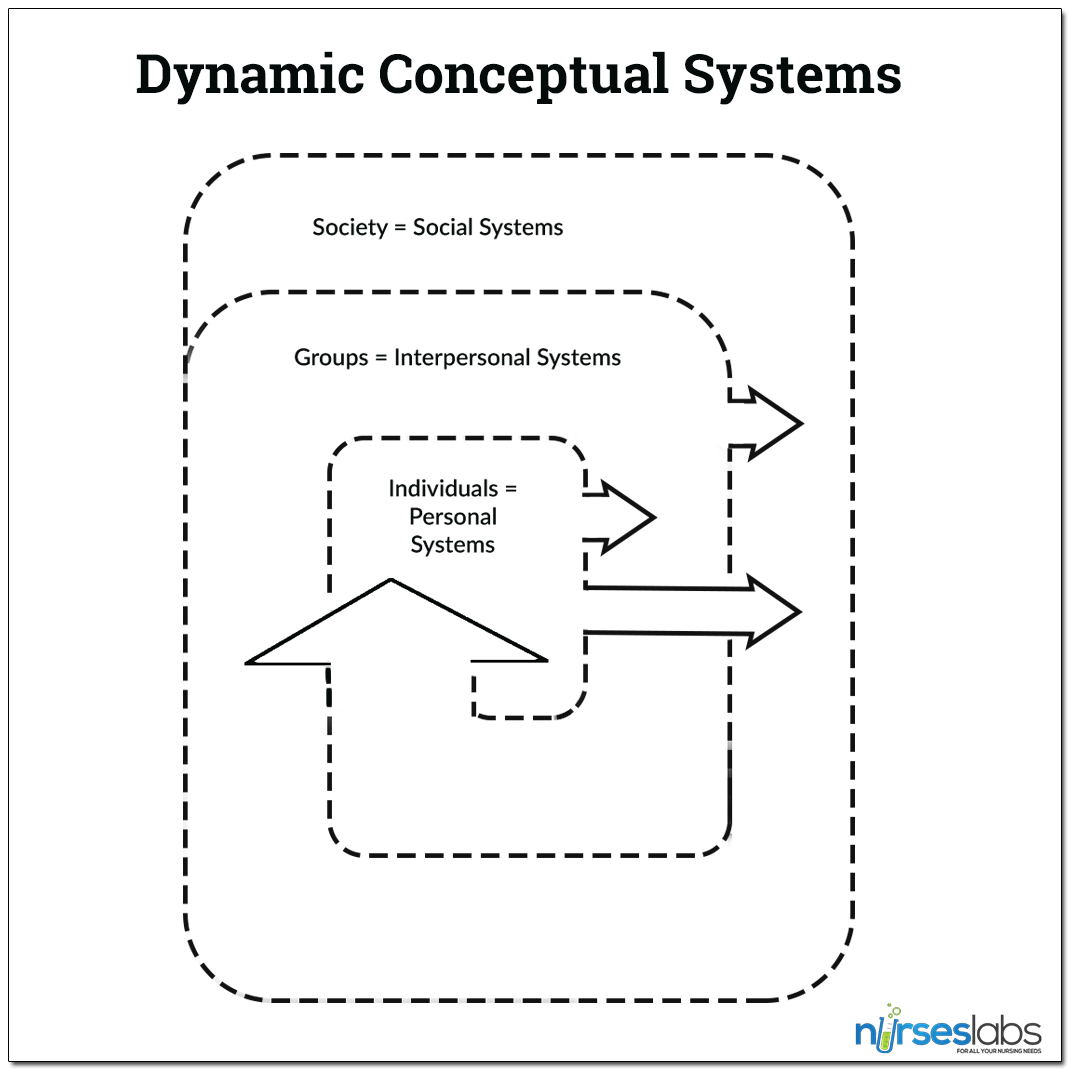
King has interrelated the concepts of interaction, perception, communication, transaction, self, role, stress, growth and development, time, and space into a goal attainment theory. Her theory deals with a nurse-client dyad, a relationship to which each person brings personal perceptions of self, role, and personal growth and development levels. The nurse and client communicate, first in interaction and then in the transaction, to attain mutually set goals. The relationship takes place in space identified by their behaviors and occurs in forward-moving time.
She believed that her "framework differs from other conceptual schemas in that it is concerned not with fragmenting human beings and the environment but with human transactions in different kinds of environments."
Process of Interaction
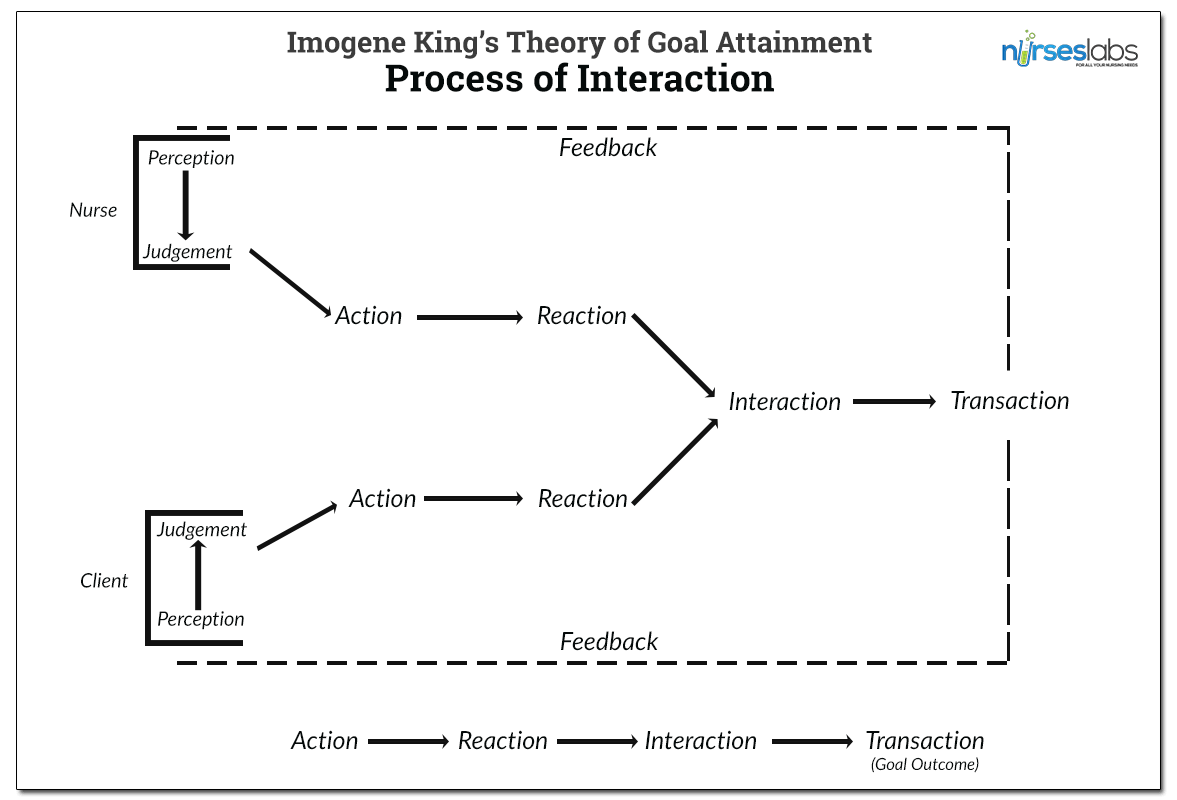
The figure above represents a process of human interactions that lead to transactions: A model of transaction. According to King, "The human process of interactions formed the basis for designing a model of transactions that depicted theoretical knowledge used by nurses to help individuals and groups attain goals."
Interaction
Interaction is a process of perception and communication between a person and environment and between person and person represented by verbal and nonverbal behaviors that are goal-directed.
Transaction
The transaction is a process of interactions in which human beings communicate with the environment to achieve valued goals; transactions are goal-directed human behaviors.
Perception is "each person's representation of reality."
Communication
Communication is defined as "a process whereby information is given from one person to another either directly in face-to-face meetings or indirectly through telephone, television, or the written word."
Role
The role is defined as "a set of behaviors expected of persons occupying a position in a social system; rules that define rights and obligations in a position; a relationship with one or more individuals interacting in specific situations for a purpose."
Stress
Stress is "a dynamic state whereby a human being interacts with the environment to maintain balance for growth, development, and performance… an energy response of an individual to persons, objects, and events called stressors."
Growth and Development
Growth and development can be defined as the "continuous changes in individuals at the cellular, molecular, and behavioral levels of activities… the processes that take place in the life of individuals that help them move from potential capacity for achievement to self-actualization."
Time
Time is "a sequence of events moving onward to the future… a continuous flow of events in successive order that implies a change, a past and a future… a duration between one event and another as uniquely experienced by each human being… the relation of one event to another."
Space
Space exists in every direction and is the same in all directions. Space includes that physical area called territory. Space is defined by the behaviors of those individuals who occupy it.
Theory of Goal Attainment and The Nursing Process
Imogene King emphasizes the nursing process in her model of nursing. The steps of the nursing process are assessment, nursing diagnosis, planning, implementations, and evaluation.
The theory explains that assessment takes place during the interaction. The nurse uses his or her special knowledge and skills while the patient delivers knowledge of him or herself and the perception of problems of concern to the interaction. During this phase, the nurse gathers data about the patient, including their growth and development, the perception of self, and current health status. Perception is the basis for the collection and interpretation of data. Communication is required to verify the accuracy of the perception, as well as for interaction and translation.
The next phase is the nursing diagnosis. This phase is developed using the data collected in the assessment. In attaining goals, the nurse identifies problems, concerns, and disturbances about which the patient is seeking help.
The planning phase arises after the diagnosis. The nurse and other health care team members create a care plan of interventions to solve the problems identified. This phase is represented by setting goals and making decisions about the means to achieve those goals. This part of the transaction and the patient's participation are encouraged in making decisions on the means to achieve the goals.
The actual activities done to achieve the goals make up the implementation phase of the nursing process. Whereas in this model of nursing, it is the continuation of transaction.
Finally, in the evaluation phase, the nurse evaluates the patient to determine whether the goals were achieved. Evaluation involves determining whether or not goals were achieved. The explanation of evaluation in King's theory addresses meeting goals and the effectiveness of nursing care.
In the healthcare field, the nurse-patient relationship's final goal is to help the patient achieve his or her goals for getting healthy. Using the nursing process described in King's Theory of Goal Attainment, a nurse can be more effective in working with a patient to achieve those goals and truly help patients.
Analysis
- The social systems portion of the open systems framework is less clearly connected to goal attainment than personal and interpersonal systems.
The citation of the individual being in a social system was not clearly explained, considering that the social system encompasses other concepts and subconcepts in her theory.
The model presents dyadic interaction in nature which implies that its applicability cannot be adapted to unconscious individuals. - A multitude of views and definitions is confusing for the reader. Because of multiple views on one concept, such as what has been discussed in her concept of power, it blurs the point that the theorist is trying to relate to the readers.
Strengths
A major strong point of King's conceptual system and Theory of Goal Attainment is how nurses can understand goal attainment theory and describe a logical sequence of events.
For most parts, concepts are concretely defined and illustrated.
King's definitions are clear and are conceptually derived from the research literature. Her Theory of Goal Attainment presents ten major concepts. The concepts are easily understood and derived from the research literature, which clearly establishes King's work as important for knowledge building in nursing.
Weaknesses
Theory of Goal Attainment has been criticized for having limited application in nursing areas in which patients are unable to interact competently with the nurse. King maintained the broad use of the theory in most nursing situations.
Another limitation relates to the lack of development of applying the theory in providing nursing care to groups, families, or communities.
King's theory also contains some inconsistencies: (1) She indicates that nurses are concerned about groups' health care but concentrates her discussion on nursing as occurring in a dyadic relationship. (2) King says that the nurse and client are strangers, yet she speaks of their working together for goal attainment and the importance of health maintenance.
Conclusion
King contributed to the advancement of nursing knowledge by developing her conceptual system and middle-range Theory of Goal Attainment. By focusing on attaining goals or outcomes by nurse-patient partnerships, King provided a conceptual system and middle-range theory that has demonstrated its usefulness to nurses. Nurses working in various settings with patients from around the world continue to use King's work to improve the quality of patient care.
See Also
You may also like the following nursing theories study guides:
- Nursing Theories and Theorists – The Ultimate Nursing Theories and Theorists Guide for Nurses.
References
- Imogene King Biography. (n.d.). Retrieved July 7, 2014, from https://king.clubexpress.com/content.aspx?page_id=22&club_id=459369&module_id=59920
- https://www.reflectionsonnursingleadership.org/
- Alligood, M., & Tomey, A. (2010). Nursing theorists and their work, seventh edition. Maryland Heights: Mosby-Elsevier.
- Safier, G. (1977). Contemporary American leaders in nursing: An oral history. New York: McGraw Hill.
- Imogene King Biography. (n.d.). Retrieved July 7, 2014, from https://king.clubexpress.com/content.aspx?page_id=22&club_id=459369&module_id=59920
- King, I. M. (1971). Toward a theory for nursing. In George, J. (Ed.).Nursing theories: the base for professional nursing practice. Norwalk, Connecticut: Appleton & Lange.
- King, I. (1981). A theory for nursing: Systems, concepts, process. In McEwen, M. and Wills, E. (Ed.). A theoretical basis for nursing.USA: Lippincott Williams & Wilkins.
- King, I. M. (1986). Curriculum and instruction in nursing. In George, J. (Ed.). Nursing theories: the base for professional nursing practice. Norwalk, Connecticut: Appleton & Lange.
- King, I.M. (1990). A theory for nursing: Systems, concepts, process. In George, J. (Ed.). Nursing theories: the base for professional nursing practice. Norwalk, Connecticut: Appleton & Lange.
- King, I. M. (1995). A systems framework for nursing. In McEwen, M. and Wills, E. (Ed.). Theoretical basis for nursing.USA: Lippincott Williams & Wilkins.
External Links
- The Language of Nursing Theory and Metatheory
- Theory for Nursing: Systems, Concepts, Process
- Curriculum and Instruction in Nursing: Concepts and Process
- Theory Development: What, Why, How?
With contributions by Wayne, G. (for Biography), Vera, M., Ramirez, Q.
What Are Goals Of Science? Choose All That Apply.
Source: https://nurseslabs.com/imogene-m-kings-theory-goal-attainment/
Posted by: dampierthersom.blogspot.com

0 Response to "What Are Goals Of Science? Choose All That Apply."
Post a Comment